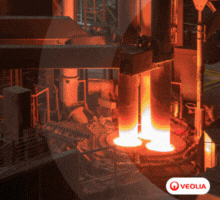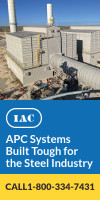Salzgitter Reports Success With Hydrogen Electrolyzer Trial Run
10/17/2022 - Salzgitter is wrapping up what it calls a successful trial with high-temperature electrolysis for hydrogen production and steel production.
In a statement, the German steelmaker said the EU-funded GrInHy2.0 project, also called simply the green industrial hydrogen project, successfully demonstrated industrial-scale solid oxide electrolysis cell technology with partner Sunfire, a maker of electrolyzers.
“GrInHy2.0 is an important lighthouse project for Sunfire, in which we successfully demonstrated our SOEC technology on an industrial scale,” said Sunfire chief technical officer Christian von Olshausen.
“At the same time, we have gained valuable insights for the further technical development. Projects like this lay the foundation for rapidly scaling electrolysis technologies worldwide.”
The GrInHy2.0 electrolyzer is housed at the Salzgitter Flachstahl plant, where it takes advantage of industrial waste heat and renewable electricity. The system operates at temperatures of 850°C, reducing steam into its hydrogen and oxygen components.
Salzgitter said the electrolyzer set new efficiency standards this year.
“For the first time, the project partners were able to demonstrate an electrical efficiency of 84% el, LHV – this corresponds to an energy requirement of only 39.7 kWh/kgH2. In addition, the system produced up to 200 standard cubic meters of green hydrogen per hour. No other operator has previously been able to demonstrate such high numbers.”
Salzgitter in turn has used almost 100 tons of the produced hydrogen in its annealing processes and galvanizing plants.
“GrInHy2.0 is an important part of our SALCOS project for CO2-reduced steel production,” said Alexander Redenius, of Salzgitter Mannesmann Forschung, the company’s research and development arm.
“For the transformation of steel production towards hydrogen-based processes, the criteria of availability and cost-effectiveness are becoming increasingly important. Therefore, high-temperature electrolysis is a very interesting technology in the field of steel production, which we will continue to support intensively,” Redenius said.



.jpg?lang=en-US&ext=.jpg)
-(1).gif?width=220&height=200&mediaprotectionhash=8011a71ede637cd523c67b1296fc49e6151560fde821a46f29cc85998cc76615&ext=.gif)



